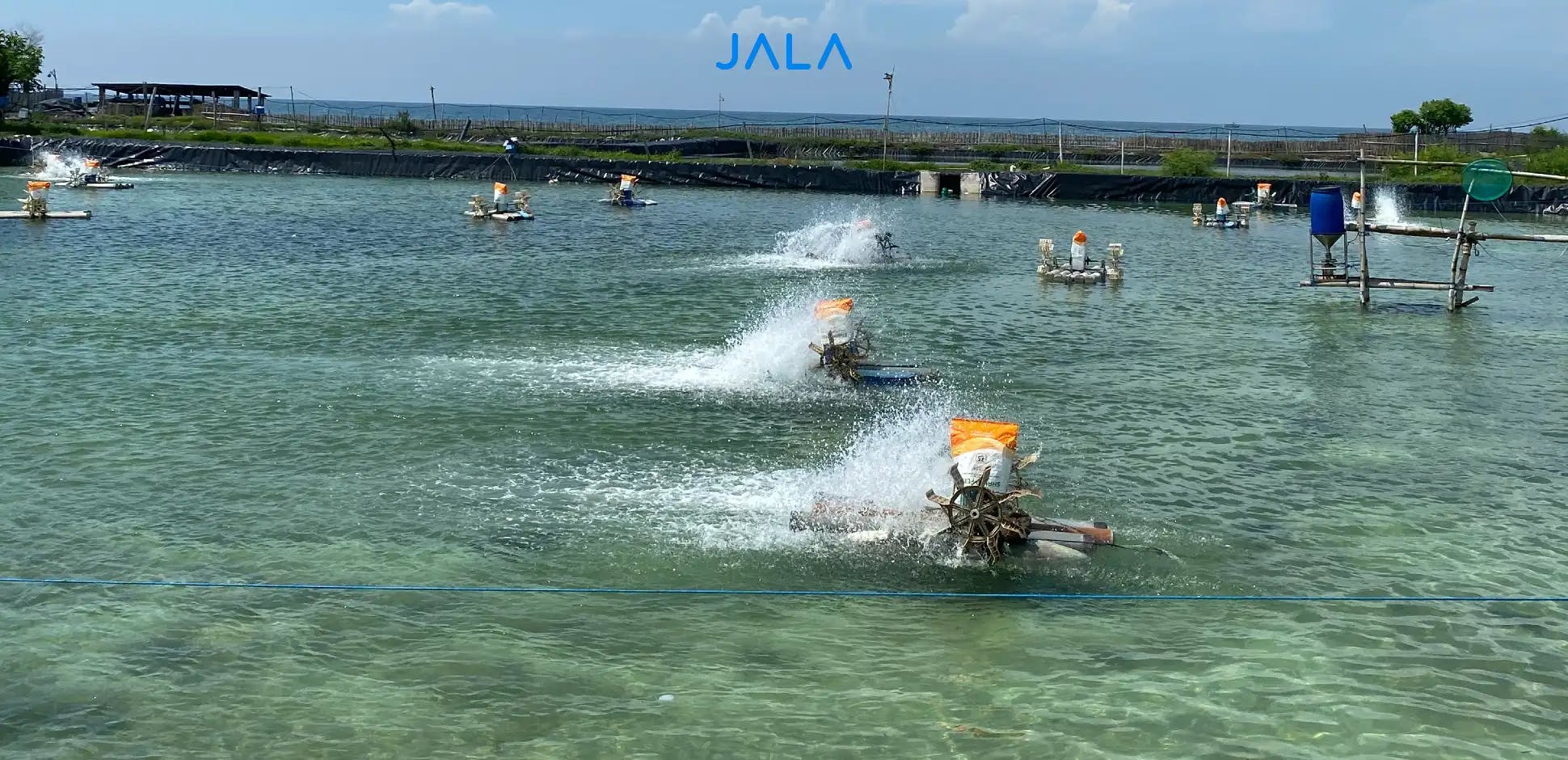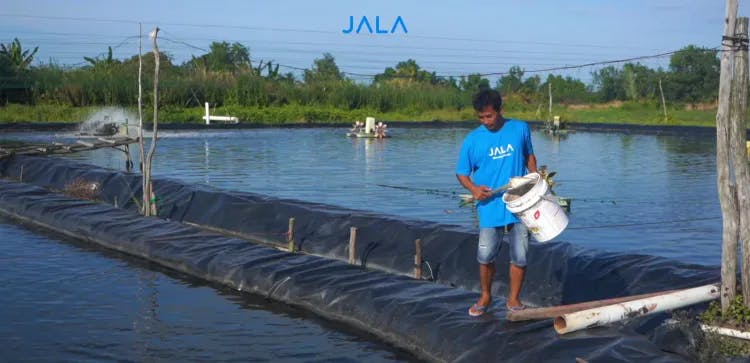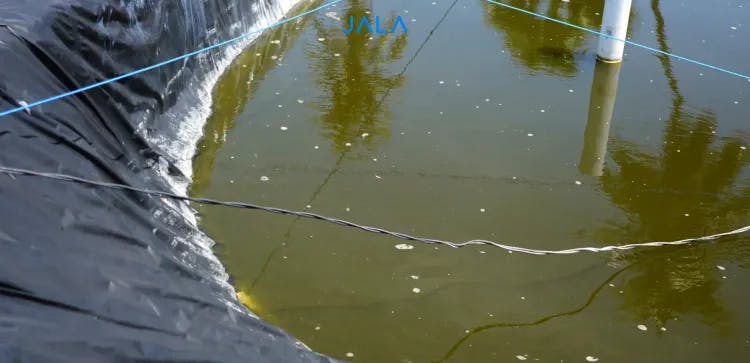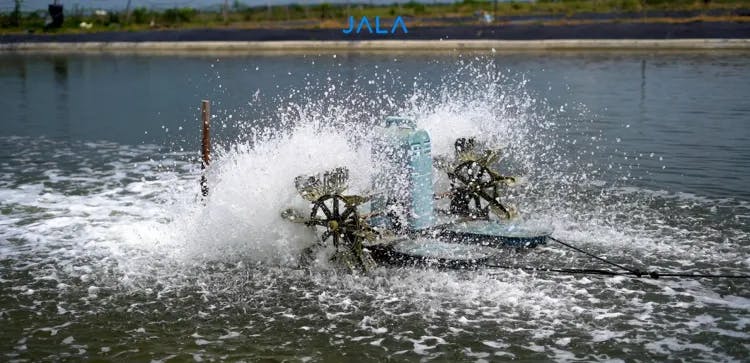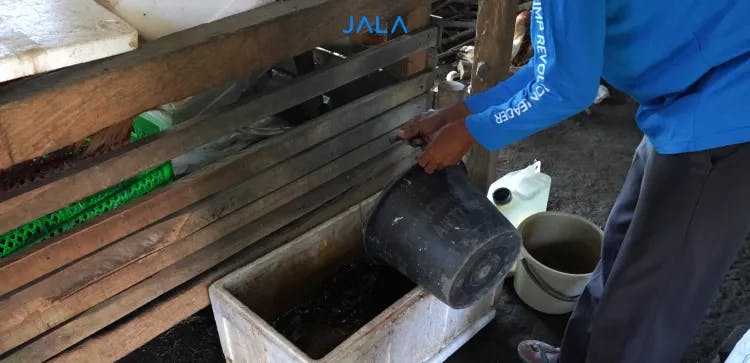Shrimp cultivation heavily relies on the presence of planktons in pond water. Planktons play a crucial role throughout shrimp cultivation, as they serve as a natural feed source for shrimp as well as a buffer for sunlight intensity. One of the ways farmers can ensure the growth of planktons in their shrimp farm is by using fertilizers. What are the types of fertilizers to grow planktons in shrimp farms? Check out the full explanation in this article!
Why Are Planktons Important in Shrimp Farms?
Planktons, particularly phytoplanktons, are one of the determining factors of cultivation water quality. This is due to their role as the main producer in aquatic ecosystems as well as natural feed for cultivated shrimp. Moreover, phytoplanktons also minimize the risk of the development of harmful algae.
Read more: Get to Know BGA, the Group of Plankton that We Should Beware
The higher the abundance of planktons in shrimp farms, the regulation of pH will also be more stable, and the supply of dissolved oxygen (DO) will increase.
Types of Fertilizers to Grow Planktons in Shrimp Farms
Considering the various benefits of plankton for aquaculture, farmers can use fertilizers to grow plankton in shrimp ponds. Here are some types of fertilizers commonly used in shrimp ponds.
1. Mineral (Inorganic) Fertilizers
Mineral or inorganic fertilizers contain mineral elements that support the growth of planktons in shrimp farms. This type of fertilizers contain primary elements such as nitrogen (N), phosphorus (P), and potassium (K), as well as secondary nutrients such as calcium, magnesium, and sulfur.
Mineral fertilizers help increase the alkalinity of pond water, allowing nitrifying bacteria to convert ammonia (NH₃) to nitrate (NO₃) to be utilized by planktons.
Moreover, the addition of calcium carbonate (CaCO₃) or dolomite (CaMg(CO₃)₂) in the morning also helps with plankton growth.
2. Organic Fertilizers
The next type of fertilizer for shrimp ponds is organic fertilizer, which consists of organic materials and mineral nutrients. Organic materials used may include animal waste, agricultural waste, plant residues, and compost. Keep in mind that materials such as animal waste should be used with caution as they may be a source of pathogens.
These fertilizers help to grow planktons by providing food and carbon dioxide for planktons to undergo photosynthesis. Adding these fertilizers also increases the abundance of bacteria in the pond water to accelerate the decomposition of organic matter at the pond bottom.
3. Nitrifying Bacteria
Nitrifying bacteria can also be used to grow plankton in shrimp ponds because of their role in converting ammonia into nitrate. However, the dosage must be limited to avoid causing excessive plankton growth, which can result in decreased dissolved oxygen (DO) levels. The recommended dosage is 0.3-0.5 ppm once a week, and the bacteria should be introduced in the morning.
4. Fermentation Products
Fermentation products can also be used as fertilizers to grow planktons in shrimp farms. Fermentation materials used may include bran, bran polis, molasses, and so on. Fermentation products are spread in the pond to increase nitrite levels and enhance carbon content in the water, which is utilized by nitrifying bacteria.
Read more: Tips on growing the plankton in shrimp farm
Conclusion
Planktons act as a feed source and stabilize water quality in shrimp farms. Thus, farmers should ensure normal growth of planktons in their farm. One of the strategies to support plankton growth is through the use of fertilizers. The types of fertilizers used in shrimp farms are:
- Mineral (Inorganic fertilizers)
- Organic fertilizers
- Nitrifying bacteria
- Fermentation products
Throughout cultivation, farmers should pay attention to their plankton population. By using JALA App, farmers can record and monitor the information on plankton composition in an easy, thorough, and detailed manner. By doing so, farmers can anticipate the lack or excess of plankton growth in their farm.
Aside from monitoring planktons, JALA App has many features that are #HeretoHelp farmers in their cultivation, from recording over 40 cultivation parameters, monitoring their farm, to getting cultivation estimates and checking shrimp prices. Haven't joined JALA App yet? Register now at app.jala.tech or download the mobile version from Google Play Store or App Store!
